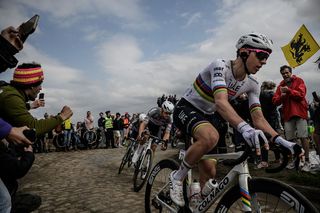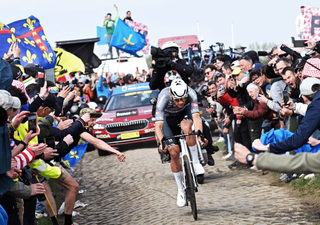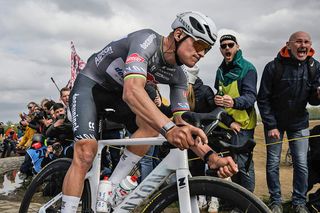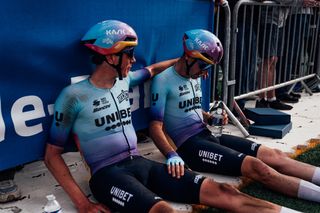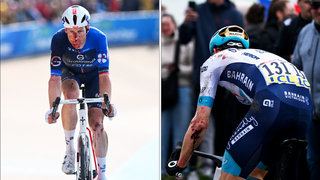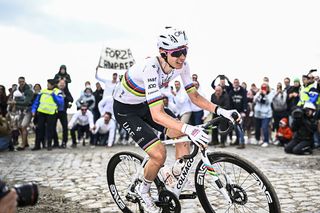Latest News from the Race
-
-
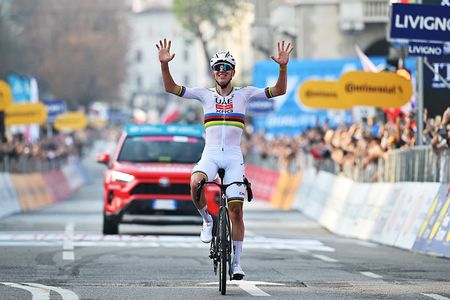 Feature
Feature'I hope I don't stop writing this book' - Analysing Tadej Pogačar's continued drive to tear up conventional script with impressively ambitious 2026 calendar
-
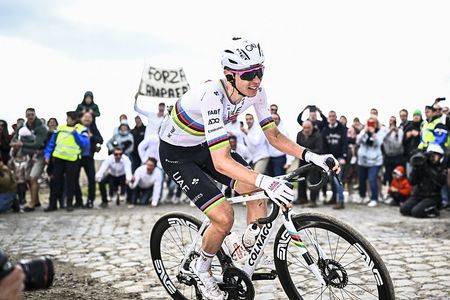 News
NewsTadej Pogačar makes surprise 160km Paris-Roubaix recon and bike test ride
-
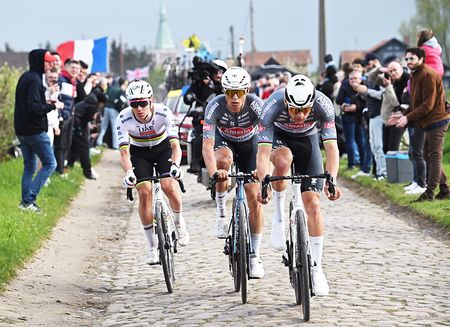 News
News'I get emotional thinking about Paris-Roubaix' – Jasper Philipsen puts sprinting aside for another shot at the 2026 cobbled Classics
-
Category | UCI WorldTour |
|---|---|
Date | April 12, 2026 |
Start | Compiègne |
Finish | Roubaix velodrome |
Distance | 259.2km |
Previous edition | |
Previous winner | Mathieu van der Poel (Alpecin-Deceuninck) |
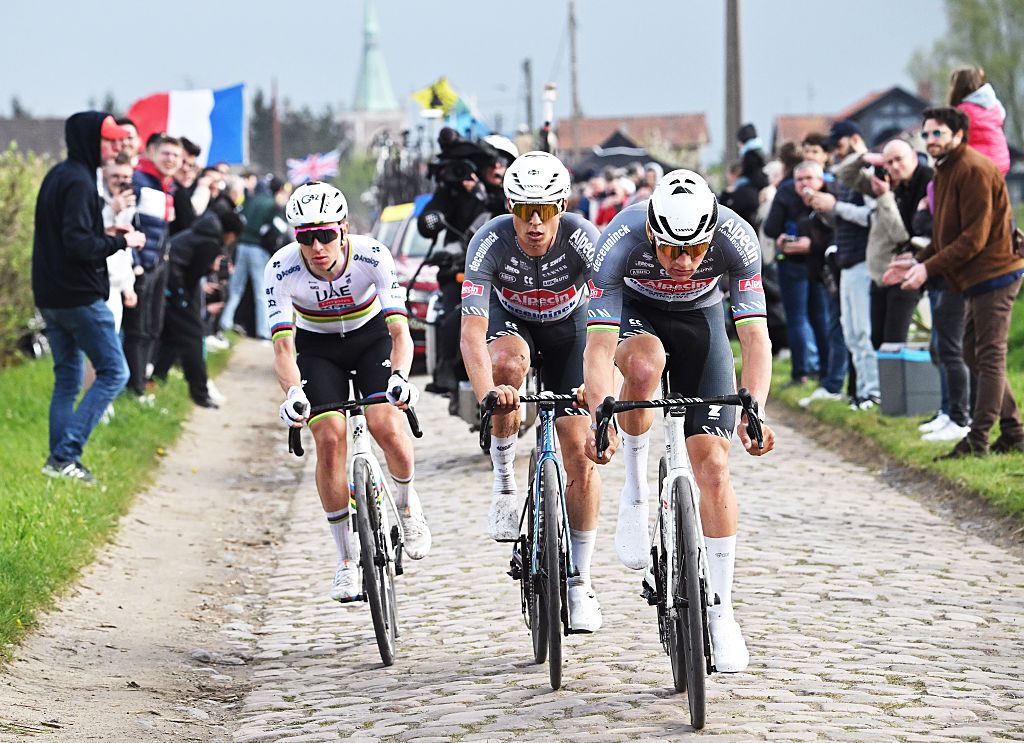
Paris-Roubaix history
Often described as the Queen of the Classics or the Hell of the North, Paris-Roubaix is the third Monument of the cycling season and arguably the most recognisable event in the sport after the Tour de France. The race dates back to 1896 and has taken place 120 times since then.
Compiègne – around 80km outside of Paris – has hosted the race start since 1977, while Paris played host from the very start up to 1967.
Belgians have dominated the cobbled Classic, with 57 winners over the years.
Two Belgians share the accolade of taking the most wins at the race, with Roger De Vlaeminck winning four times in the 1970s and Tom Boonen completing his quadruple between 2005 and 2012. As you'd expect, the honour roll is replete with huge names from cycling history, from Eddy Merckx and Sean Kelly to Johan Museeuw and Fausto Coppi.
In 2025 Mathieu van der Poel (Alpecin-Deceuninck) powered to a third win in a row in the Hell of the North.
Race debutant Tadej Pogačar (UAE Team Emirates-XRG) stayed on terms with him into the finale but then faded to second after misjudging a turn and having an ungraceful get-off with 40 kilometres to go.
Get unlimited access to all of our coverage of the Spring Classics- including reporting, breaking news and analysis from Strade Bianche, Tour of Flanders, Paris-Roubaix and more.
Races
-
Paris-Roubaix12 April 2026 - 11 April 2026 | Roubaix | WorldTour
-
Elite men | Compiègne - Roubaix2026-04-11
-
Latest Content on the Race

'I hope I don't stop writing this book' - Analysing Tadej Pogačar's continued drive to tear up conventional script with impressively ambitious 2026 calendar
By Alasdair Fotheringham published
Feature Combination of cobbled Classics and Tour de France targets maintains Slovenian in class of his own
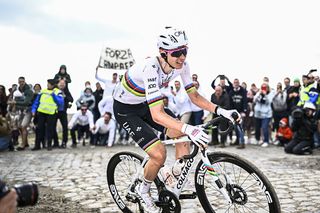
Tadej Pogačar makes surprise 160km Paris-Roubaix recon and bike test ride
By Stephen Farrand published
News UAE Team Emirates-XRG leader expected to return to Paris-Roubaix in 2026 for revenge match with Mathieu van der Poel
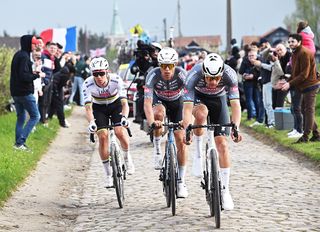
'I get emotional thinking about Paris-Roubaix' – Jasper Philipsen puts sprinting aside for another shot at the 2026 cobbled Classics
By Stephen Farrand published
News Belgian to again join forces with Mathieu van der Poel before summer focus on sprinting
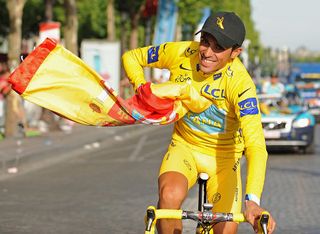
'If anybody can give Pogačar a headache, it's Vingegaard' – Alberto Contador says Dane remains top rival for Tour de France
By Alasdair Fotheringham published
News Former Spanish great praises Pogačar for Paris-Roubaix participation
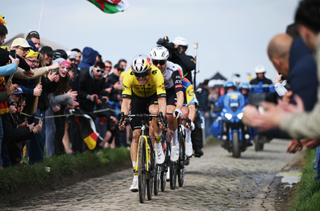
From TV quiz show to Paris-Roubaix equipment testing – Wout van Aert back to business with Visma's early cobbled Classics preparation
By James Moultrie published
News Belgian star completes 95km ride around five-star Carrefour de l'Arbre sector alongside several teammates
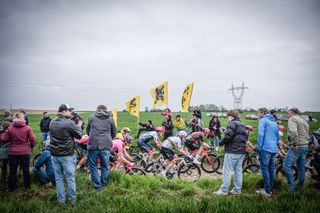
Tadej Pogačar's final challenges: Paris-Roubaix – Mission impossible?
By Dani Ostanek published
Feature Can the 'new Cannibal' ever add the cobbled Classic to his palmarès, and how would he go about beating Mathieu van der Poel?
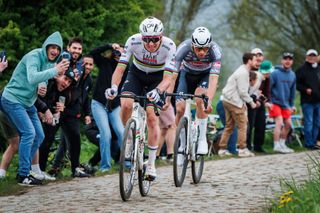
'I cannot finish my career without trying everything' – Tadej Pogačar continues search for variety into 2026, targets Milan-San Remo and Paris-Roubaix again
By James Moultrie published
News The two Monuments currently missing from Pogačar's palmares 'the two that I'm really motivated to fight for the win'

'I don't think I can do this every Spring' - Tadej Pogačar plays down expectations for repeat Classics season stunner in 2026 and beyond
By Alasdair Fotheringham published
News Slovenian first rider ever to finish on six Monument podiums in succession
Top News on the Race
-
'I cannot finish my career without trying everything' – Tadej Pogačar continues search for variety into 2026, targets Milan-San Remo and Paris-Roubaix again
The two Monuments currently missing from Pogačar's palmares 'the two that I'm really motivated to fight for the win' -
'I don't think I can do this every Spring' - Tadej Pogačar plays down expectations for repeat Classics season stunner in 2026 and beyond
Slovenian first rider ever to finish on six Monument podiums in succession -
Silvan Dillier avoids injury after Paris-Roubaix crash with Visma-Lease A Bike mechanic
Post-race bulletin stated that Swiss rider had suffered a fracture to his right hand in the fall on the fifth cobbled sector
-
Tadej Pogačar 'bears the closest resemblance to old warriors like me and Merckx' – Bernard Hinault
Former French great argues Pogačar's rivalry with Mathieu van der Poel and others is massively beneficial for cycling -
'How could I be so stupid?' – Remorseful spectator who threw bidon at Mathieu van der Poel apologises after Paris-Roubaix incident
'I am so happy that he crossed the finish line first' says Belgian man to Het Laatste Nieuws as he tells story for the first time -
'People who behave like that are not welcome' – Van Aert and Pogačar show solidarity with Mathieu van der Poel after bidon-throwing incident
'We want fans to be passionate, but there is no room for aggression or unwanted behaviour like we saw on Sunday' says world champion
-
UCI, Alpecin-Deceuninck to pursue bidon thrower 'so that such behaviour is severely punished'
Mathieu van der Poel's team: 'misbehaviour of a few individuals can have far-reaching consequences' -
For the love of Paris-Roubaix – Girmay, Dygert and every Hell of the North finisher emotional after making it to the velodrome
'I have pain everywhere but it's a beautiful race' says Biniam Girmay as he achieves best-ever finish for an African male rider -
Paris-Roubaix medical updates – From fractures for Ballerini and a bloodied face for Küng to lucky escapes for Theuns and Ferguson
The accumulating injury reports from a brutal weekend of racing at the Hell of the North
Related Features
-
'I hope I don't stop writing this book' - Analysing Tadej Pogačar's continued drive to tear up conventional script with impressively ambitious 2026 calendar
Combination of cobbled Classics and Tour de France targets maintains Slovenian in class of his own -
Tadej Pogačar's final challenges: Paris-Roubaix – Mission impossible?
Can the 'new Cannibal' ever add the cobbled Classic to his palmarès, and how would he go about beating Mathieu van der Poel? -
Sean Kelly's Classics Column: 'If Tadej Pogačar stopped racing this year right now, his season would already be a huge success'
Significant collective improvement in Classics by Pogačar's team helps Slovenian dominate from Strade Bianche to Liège-Bastogne-Liège -
Paris-Roubaix: The Good, The Bad, and The Ugly of the Hell of the North
Digesting all the action from the 2025 editions of the biggest Classic on the calendar -
Paris-Roubaix defeat only confirms Tadej Pogačar's greatness – Opinion
Slovenian's multitude of talents make him the best of his generation and an example for the sport to follow


